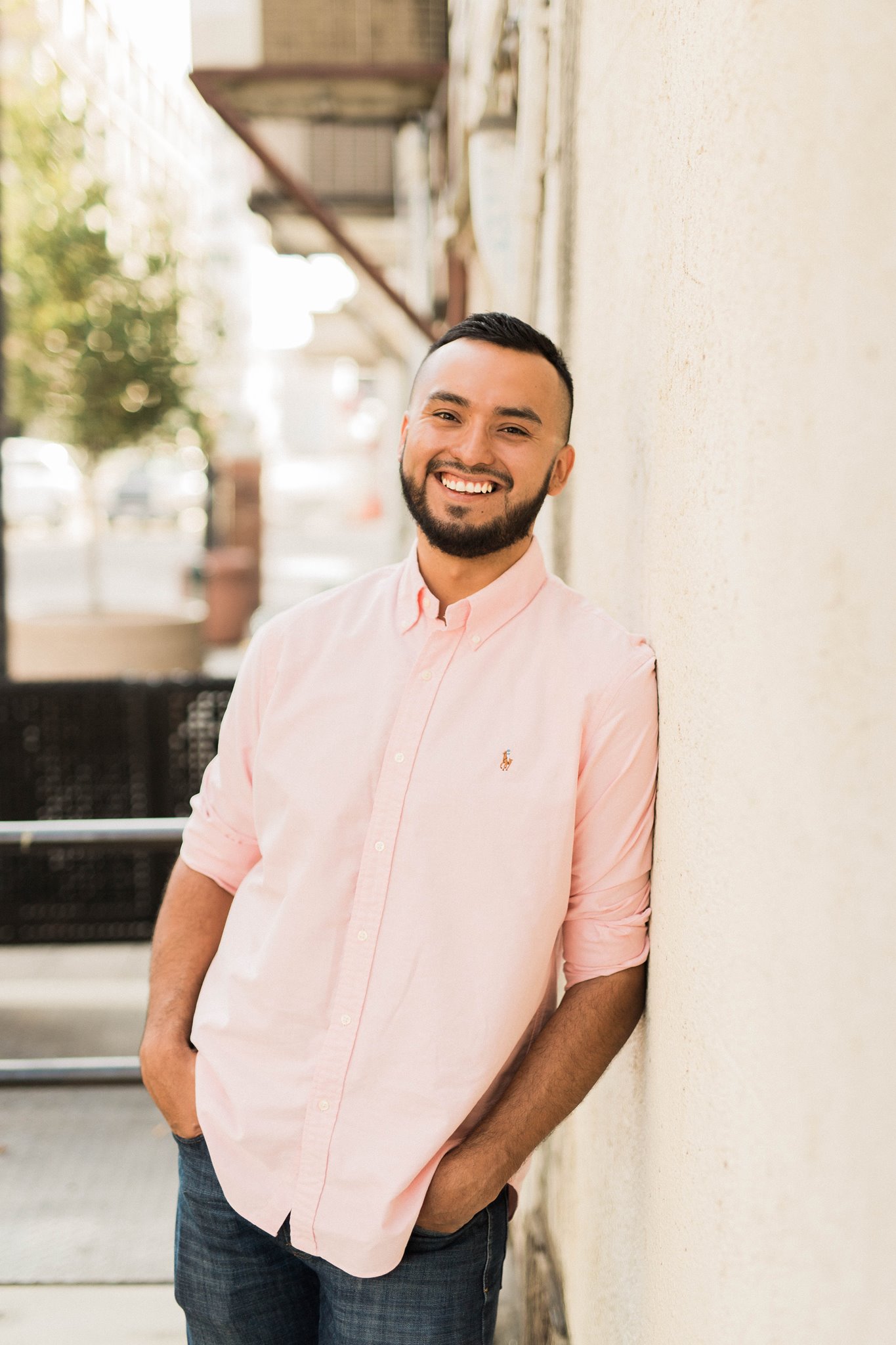When you think of the American Dream, your first thought may be homeownership or even better, attaining financial freedom where owning a home is included. Unfortunately for me, my American Dream was to get out of debt. That’s right, my American Dream was to get out of debt.
This is no surprise though, the average American debt in 2020 according to Experian is $92,727. This amount of debt includes student loans, auto loans, mortgage, personal loans, home equity line of credit (HELOC), and credit cards. In late 2019, my debt included: $50,000 of student loans, $5,000 of auto loans, and $2,000 credit card debt. I thought being in debt was normal and part of life, but I soon realized that it wasn’t nor should it be.
In this blog, I’m going to share how this side hustle of Abel to Grow came to be and where I hope to take it. I’m going to get personal with you because transparency is key to any type of growth, whether it be business or personal. Let’s begin.
How did you get into debt?

I want to preface that no one wants to get into debt. I did not wake up one morning and say “Today is the day I am going to be over $50,000 in debt. Let’s go!” No. That obviously did not happen and while I will take responsibility for my actions, I hope to also shine light on systemic disparities in the education system that led me to get into debt.
The primary amount of my debt comes from student loans. As of September 2021, the amount that I’m able to see from my servicer Great Lakes and the National Students Loan Data System (NSLDS) was $49,735.37. This may not be the original loan amount which would be without interest. To be frank, I don’t want to upset myself by discovering how much interest has grown since I graduated undergrad in June 2013 and graduate school in May 2018. Being first-generation, low-income, and from a migrant family meant that my only access to higher education was through student loan borrowing. While I won’t bore you on how bad the student loan crisis is, I will recommend that you read The Debt Trap by Josh Mitchell, a Wall Street Journal reporter. He describes how student loans became a national catastrophe and shines light on how much worse it can and will get.
I am one of the many victims of student loans. A 17-year old Abel navigated college applications, scholarship applications, financial aid, and college planning by himself. My parents, who only speak Spanish and worked in agriculture all of their lives, did their best to support my education endeavours. The language barriers, lack of financial literacy, and not pursuing an American higher education themselves, limited them in how they could support my family. While I attained scholarships to fund my first year of college, I did not have enough to fund my undergraduate career. Fast forward to my master’s program, I once again had to borrow once again. This time, it was for a career change that I do not regret but the lack of financial planning played a critical role in early career financial success.
The other two types of debt I had was an auto loan of about $5,000 and credit card debt of about $2,000. While these amounts are low compared to the American average, I had no place in owing this much for either category. My auto loan was from a purchase back in 2016 and the credit card debt was from not managing my financial priorities. I should have known better, but financial planning is difficult when you’re the first generation to discover the impact of what generational wealth can be.
What made you wake up and say “I need to do better and take charge of MY finances?”
In 2019 I fell into the comparison trap from the people I followed on social media. I thought to myself, “How are they going to [x location] and affording all of that?” This comparison trap is toxic and one that I am still working on to this date. However, I tried to cheat the system in order to travel through travel hacking.
Travel hacking is the optimization of credit card rewards and points. I opened up several credit cards for their generous sign-up bonuses. These bonuses were great for places that I never dreamt of visiting. I went to Australia, Spain, and different parts of Mexico. I binged watch YouTubers who spoke on the best strategies of travel hacking and tried to follow suit until one of the folks I followed stated that this hobby was not a sustainable model. The YouTuber then sprinkled some content on personal finance. Huh? I immediately lost interest.
At the same time, I began to realize that my lifestyle and expenses were consuming me financially. Let’s just say that I was not being responsible with my finances in any regard. You know you have a problem when you try to avoid the problem at all costs. Slowly but surely, I became aware of my relationship with debt. I began to search online: how to get out of debt, how to save more, and how to be better with money. As 2019 was coming to an end, I made it a goal to be better with money in 2020.
When 2020 arrived, no one expected what was going to happen with the pandemic. My goals were beginning to align with my actions but in a way, the pandemic accelerated my debt free journey. As the world began to close down and people were hurting and drying from the COVID-19 virus, my wake up call arrived: “Oh shit, am I ready for…an emergency? A lay off? Anything, really?” So I made a promise to myself: get the fuck out of debt.
What have you done to get out of debt?
When I told you that 2020 woke me up, I meant it. I binged every type of content I could get my hands on. I subscribed to debt free journeys on YouTube, listened to podcasts and audiobooks, and read blogs. I was a sponge when it came to general personal finance and it was what I needed to propel me to get serious with paying off my debts.
In late 2019 I told myself that I needed to get a side hustle. Due to the pandemic, I needed something that allowed teleworking. I tapped into my day time job skills: social media marketing. Could I do something with this? Is there even a demand for it right now? Where do I start? The answer for this arrived when one of the blogs I followed posted a need for a part-time social media manager. Prior to this I learned what side hustles were and how they could help with debt free journeys. So I went for it and was fortunate to land the position. The side hustle income was solely dedicated for debt pay off and expenses to support this new journey of mine.
I needed little wins to be motivated, so it worked out in my favor that whether or not I pursued the debt snowball or avalanche method, it would’ve been for the same debts. I began with my credit card debt, making extra payments with extra money I could find from cutting expenses. I was simultaneously trying to track expenses and implement a budget. Once I was able to pay off my credit card debt, then came my auto loan. It was here where I appreciated the debt snowball method but then transitioned to the debt avalanche method to tackle my student loans.
Fast forward to September 2021, the remaining student debt owed is right under $37,000. While this amount is now where the national average is for student loans, I am motivated more than ever to keep it going. During this debt free journey, I have also been able to invest more into my 401k, save for a 3-month emergency fund, and instead of relying on travel hacking, I now have a travel sinking fund.
What’s next?
Many people have a debt pay off date in their journeys and while that gives folks something to look forward to, I prefer to have a more flexible approach. My goal is to be debt free by mid-2023. This will allow me to pursue other finance goals and be intentional with my spending habits. My next finance goals include: maxing out retirement accounts, increasing my emergency fund to 6-months, and begin saving up for a home.
My debt free journey has reshaped my American Dream. My new American Dream is to achieve financial freedom. I recently learned about the FIRE community: financially independence, retiring early. While I still have a long way to go, this is an area I’ll be exploring more as we close out 2021. I’m hoping my full-time and part-time jobs allow me to grow into a better version of myself. While it has been difficult managing both jobs, it has also helped me get where I am today.
Abel to Grow is my passion project. At its core, it is a play on words on my name that reminds you and I that we are all able to grow in any aspect of life. So yes, we are Abel to Grow. This site and service aims to bring authenticity to aspiring entrepreneurs and businesses that need support with social media. I also aim to sprinkle content from my debt free journey and share my journey with personal finance. Our relationship with debt and money is personal, and I’m hoping this blog gives you some motivation to go after your finance goals. If you’re reading this, thanks for being here. I invite you to leave a comment and share where you are with debt, your business or side hustle, or anything you’d like to share.

Abel Morelos is an expert in social media strategy and content creation. He is known for implementing digital diversity to reach and engage diverse communities through social media.